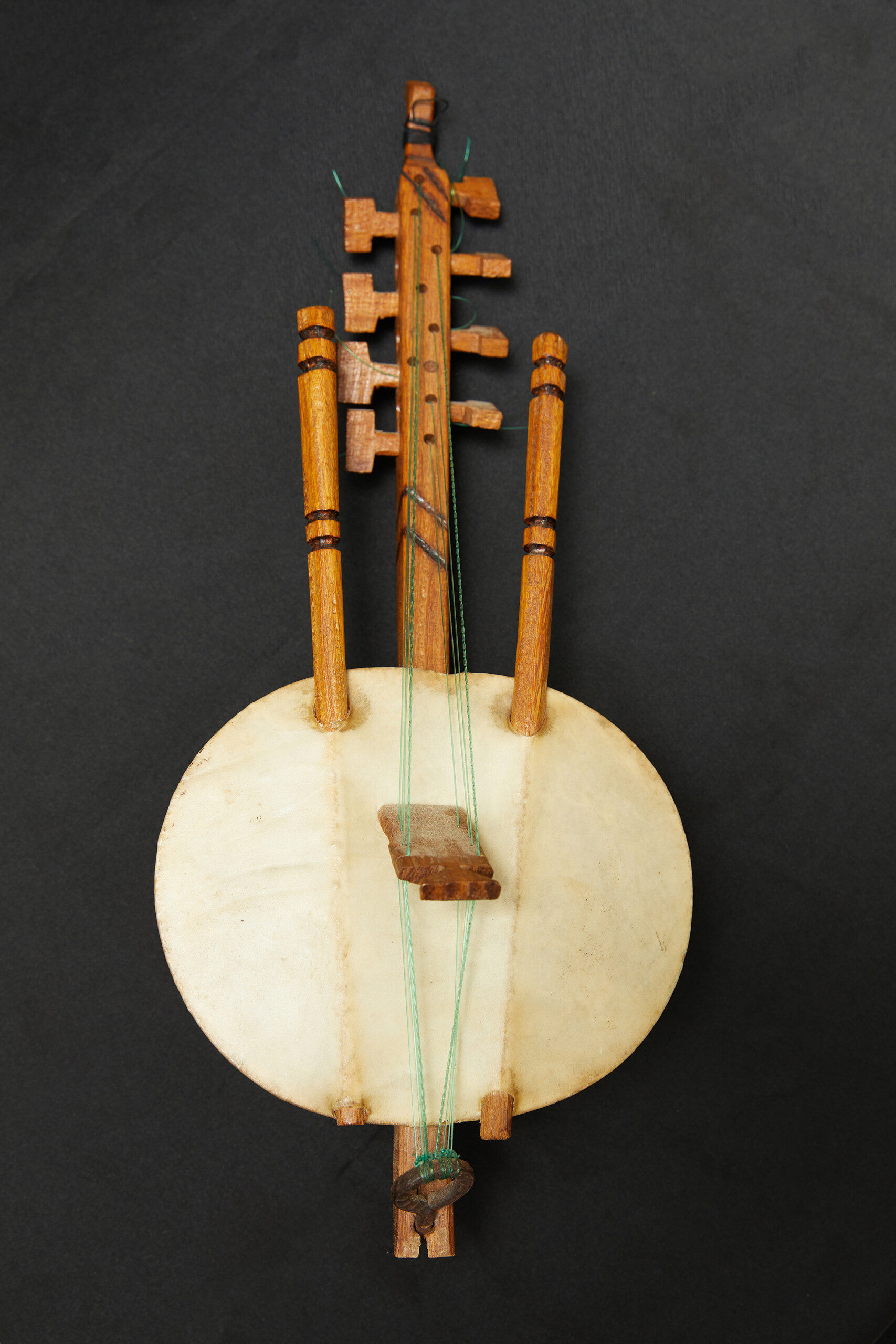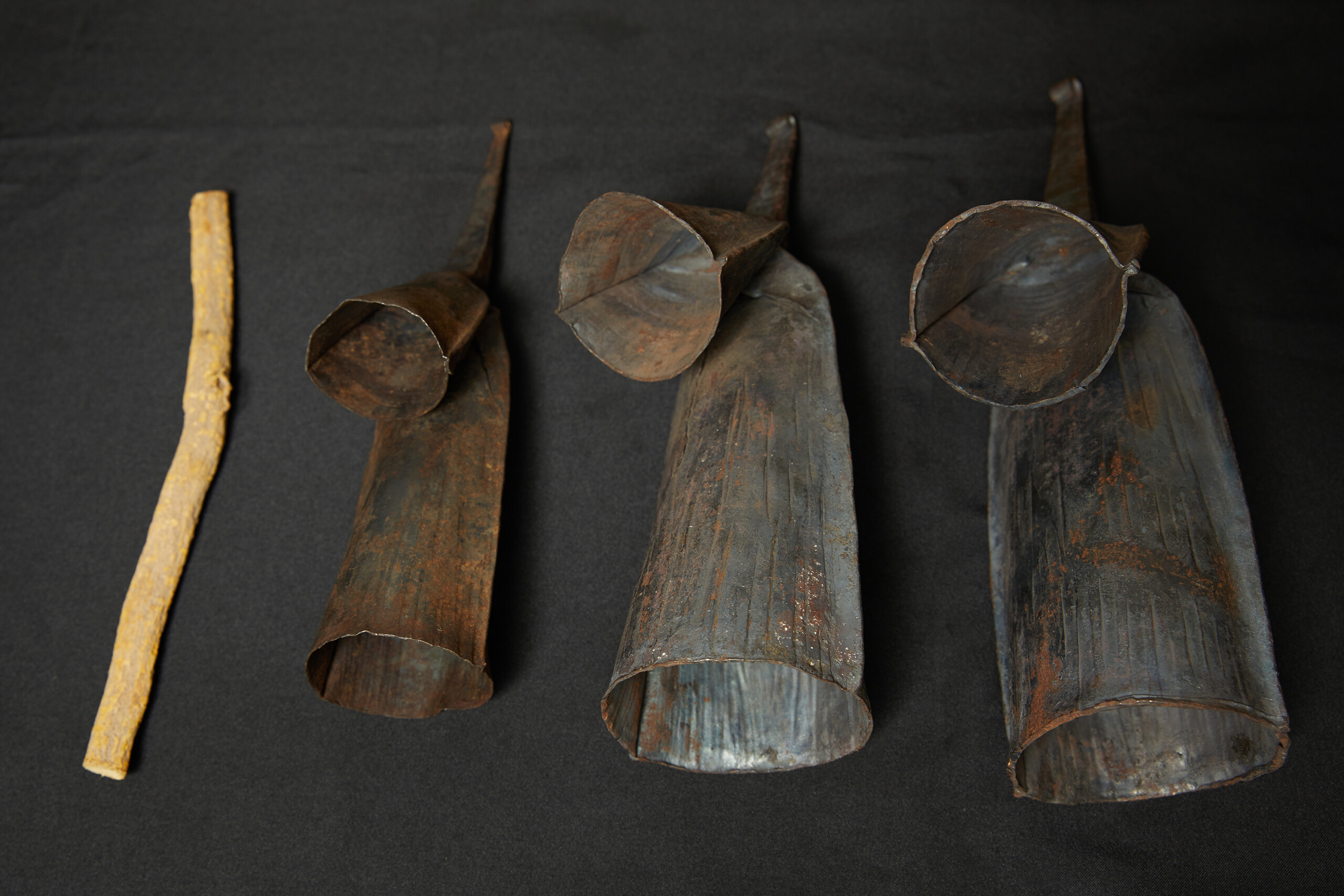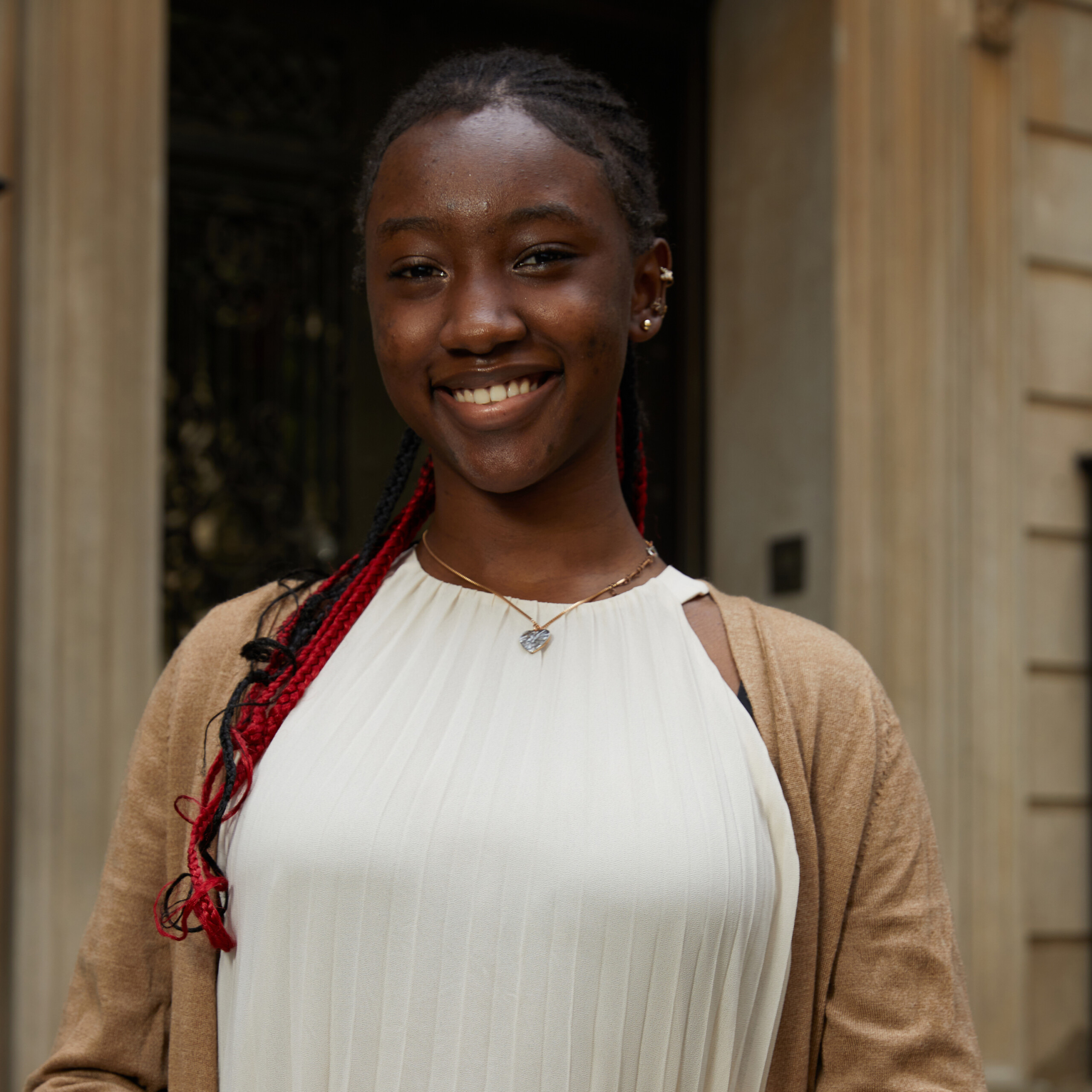PERSONAL OBJECT
BGC STUDY COLLECTION OBJECT

Maker unknown
Kora
West Africa (Guinea, Guinea Bissau, Mali, Senegal, and Gambia)
Wood, wire

Maker unknown
Set of Three Double Bells (Also Called Agogo, Gangokui, Gankokui, or Gongogwe) with Striker
Ghana
Hand-forged iron with wooden striker
The Kora is a long-necked harp lute with 21 strings and a large calabash gourd body. The strings are historically made of thin strips of finely twisted antelope hide. There’s so much history behind it. It’s quite the symbol in West African musical culture. Dating back to the late eighteenth century, the Kora is associated with royalty, the ruling classes, or religious practices. As you look at the back of this unique instrument, you notice the carvings, almost inviting you to feel the dents as you run your finger across the bulbous shaped Calabash. And those colorful green strings must be tempting you to strum them. You must be a little curious to hear the harmonious sounds that a Kora can make.
Hi, visitor. I know what you’re thinking. What is this? I patiently wait for your wandering eyes to look down at my label so you can answer your own question. I’m Ghanaian Bells, or more traditionally, Gankogui (Gan-koh-gway). Your head tilts as you analyze my features. Your eyes are drawn to my uneven structure. One of my bells is bigger than the other. I might just look like an oddly-shaped instrument made of metal, but believe it or not, I have much more significance. I come from the Ewe group in Ghana and I’m considered the group’s life support and I’m the most important instrument. In the culture of the Ewe people, without me, the entire rhythm and framework of the music is impoverished. I know, I know, “You talk a lot for an object” but I have so much to say. I—oh wait, I forgot to introduce my sidekick. The wooden stick next to me. He doesn’t really talk; I do all of the talking, as you realized. People use him to play me. Without him, I—I’m sorry, we—wouldn’t be such an important instrument in the culture of the Ewe people.
COMPARATIVE ESSAY
Whenever I look at an object, it is rare that I view it as anything more. A computer is just a computer and not an advanced piece of technology that aids people in their everyday lives. A camera is just a camera and not a keepsake for remembered and forgotten memories. An instrument is just an instrument and not a musical symbol of culture and life. Even as I write this essay I find it hard to think of what these objects would be if not just merely objects. Why is it hard to view objects as things of active matter? Why can’t we as humans recognize the significance of objects? It is not our fault that we have such a close minded perspective on life, it is simply our default setting. But with that said, it’s important that we branch out and stray away from the “norm” of our mentality and appreciate all things in the world. I learned this while working on researching my personal object, a Kora, and Ghanaian Bells from the BGC Study Collection. What I’ve taken away from this process of looking closely is that it’s important to value all aspects of objects and push yourself to learn more about them.
ABOUT THE CURATOR

Aisha Gueye is a rising junior at the Academy For Software Engineering. Her favorite subject is Math. In her free time, Aisha likes to read mystery books, watch Nollywood movies, and play volleyball with her friends. Aisha’s current interests are criminology and psychology. To Aisha, active matter is to recognize objects as more than “ a material thing that can be seen and touched”. Aisha believes that objects should be appreciated and acknowledged more.
